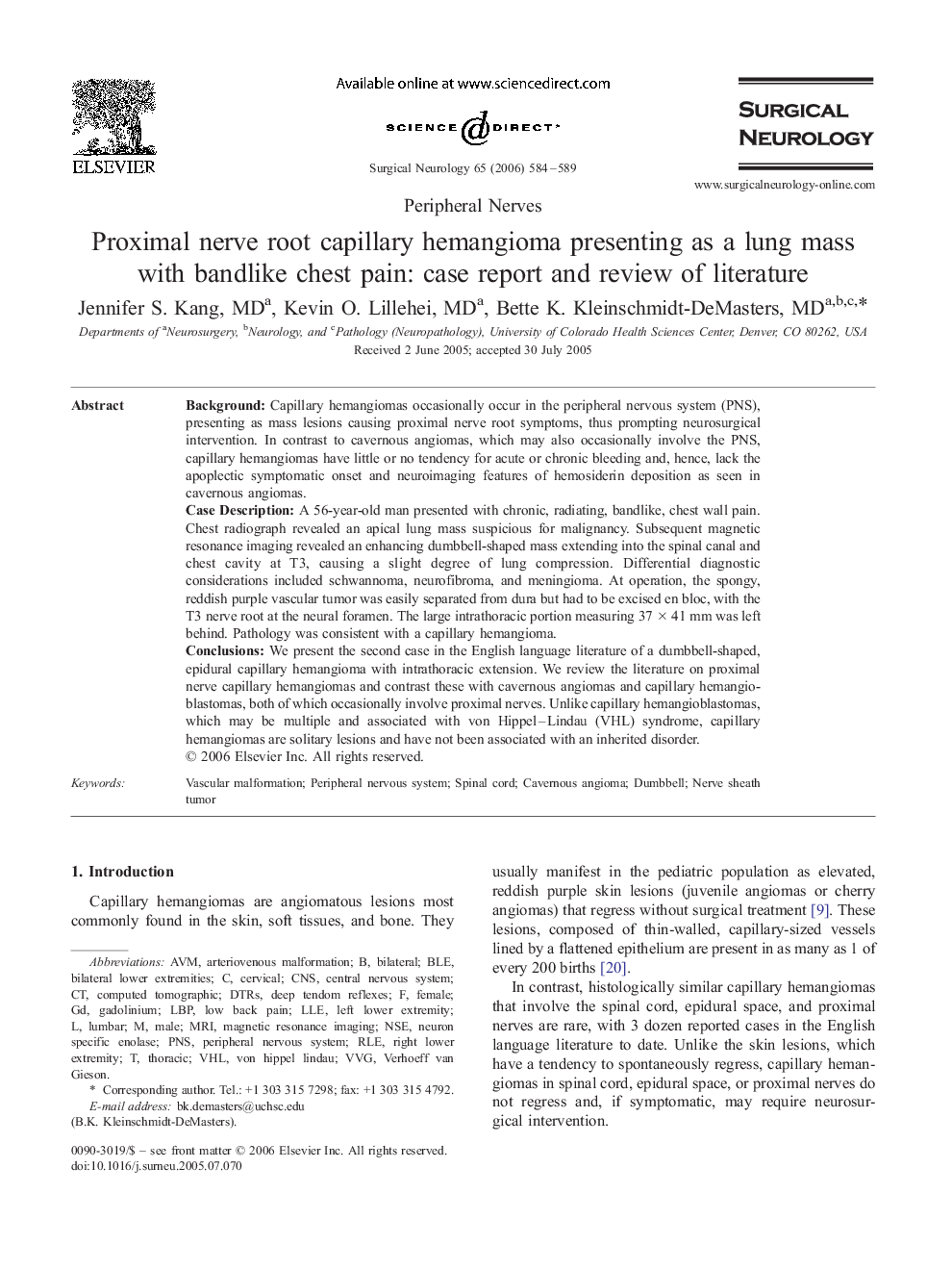| Article ID | Journal | Published Year | Pages | File Type |
|---|---|---|---|---|
| 3094148 | Surgical Neurology | 2006 | 6 Pages |
BackgroundCapillary hemangiomas occasionally occur in the peripheral nervous system (PNS), presenting as mass lesions causing proximal nerve root symptoms, thus prompting neurosurgical intervention. In contrast to cavernous angiomas, which may also occasionally involve the PNS, capillary hemangiomas have little or no tendency for acute or chronic bleeding and, hence, lack the apoplectic symptomatic onset and neuroimaging features of hemosiderin deposition as seen in cavernous angiomas.Case DescriptionA 56-year-old man presented with chronic, radiating, bandlike, chest wall pain. Chest radiograph revealed an apical lung mass suspicious for malignancy. Subsequent magnetic resonance imaging revealed an enhancing dumbbell-shaped mass extending into the spinal canal and chest cavity at T3, causing a slight degree of lung compression. Differential diagnostic considerations included schwannoma, neurofibroma, and meningioma. At operation, the spongy, reddish purple vascular tumor was easily separated from dura but had to be excised en bloc, with the T3 nerve root at the neural foramen. The large intrathoracic portion measuring 37 × 41 mm was left behind. Pathology was consistent with a capillary hemangioma.ConclusionsWe present the second case in the English language literature of a dumbbell-shaped, epidural capillary hemangioma with intrathoracic extension. We review the literature on proximal nerve capillary hemangiomas and contrast these with cavernous angiomas and capillary hemangioblastomas, both of which occasionally involve proximal nerves. Unlike capillary hemangioblastomas, which may be multiple and associated with von Hippel–Lindau (VHL) syndrome, capillary hemangiomas are solitary lesions and have not been associated with an inherited disorder.
